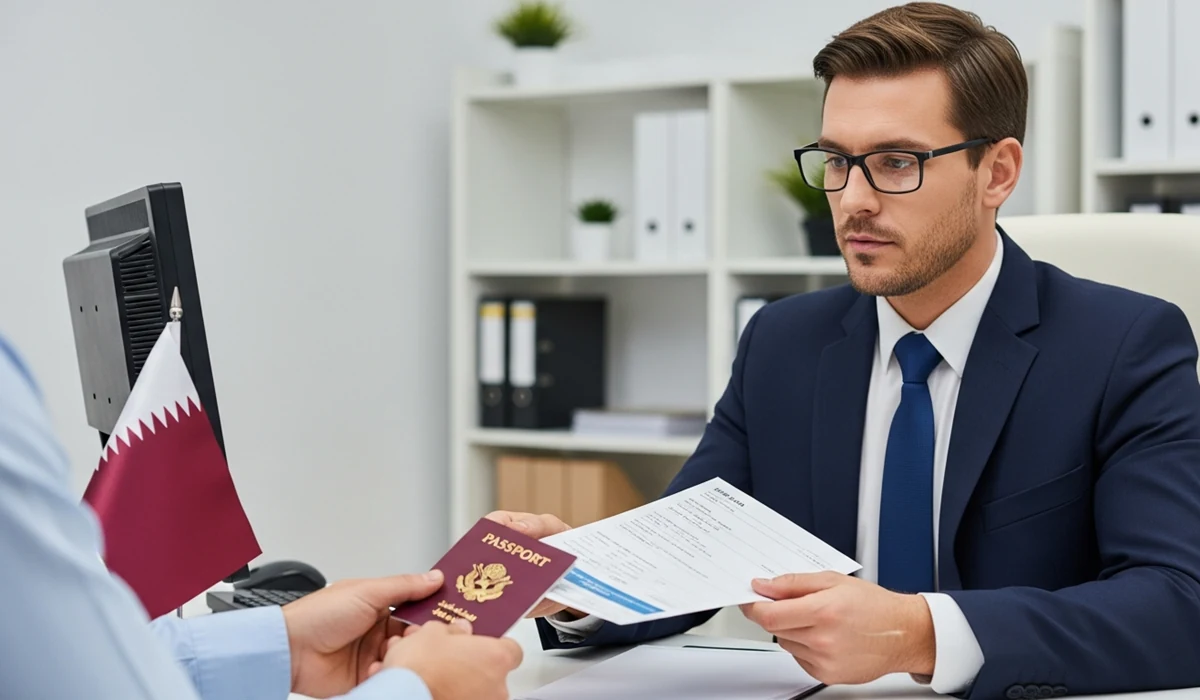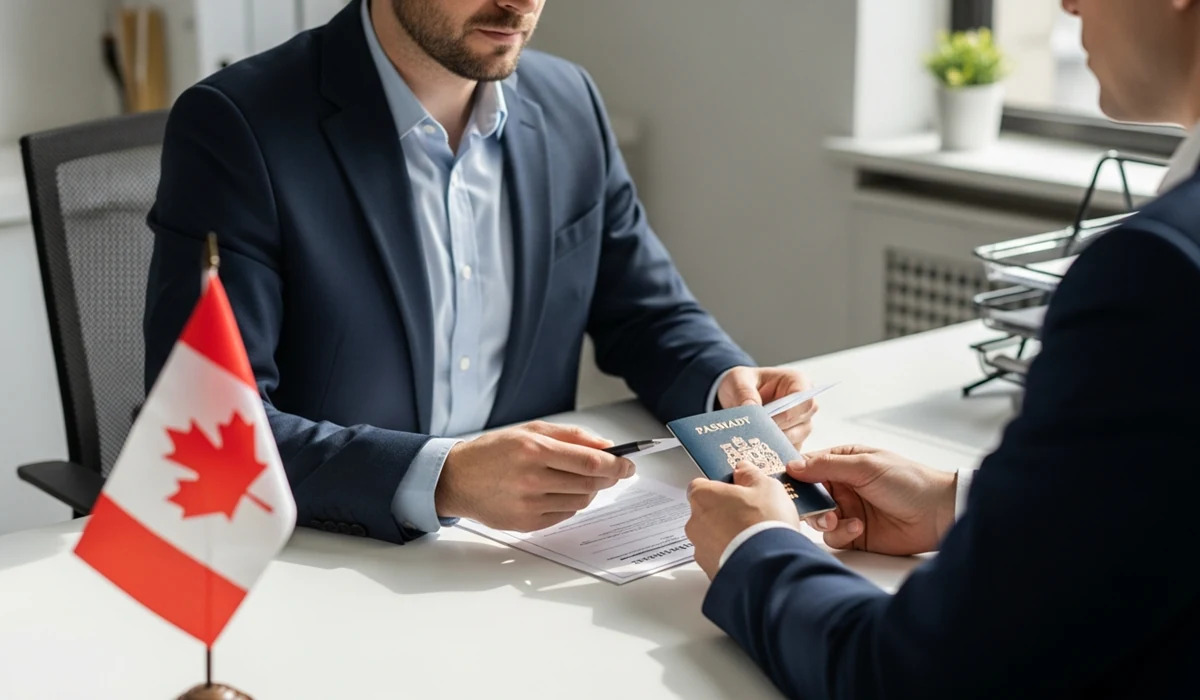Table of Contents

Submitting the DS-160 form is a key part of your US visa application, but even small mistakes can cause delays or even denial at your interview. At Visa Library, we understand how stressful the steps after DS-160 submission can be, especially after all the time and effort you’ve already put in.
Let’s explain what happens after submitting your DS-160 form to move forward with confidence.
What is the Next Step after DS-160 Submission?
Once you hit “submit” on your DS-160 form, your visa journey is just beginning. You’ll get a confirmation page that is your golden ticket, but don’t stop there. Here’s exactly what happens next and what you need to do.
Save and Print the DS-160 Confirmation Page
After you submit the DS-160 form, the system will immediately give you a confirmation page with a barcode. This page is very important. You will need to bring it to your visa interview. No barcode, no interview.
What to do:
- Print at least 2 copies, one for the interview, one as backup
- Save the digital version to your email or cloud
- Don’t try to reprint later unless you saved the application ID
- Without this page, you cannot book your visa appointment. Treat it like your boarding pass.
Pay the Visa Application Fee (MRV Fee)
After DS-160 submission, you must pay a visa fee before booking your US visa appointment. This is called the MRV (Machine Readable Visa) fee. The amount depends on your visa type. For most tourist, student, and exchange visitor visas, it’s $185.
What to do:
- Go to your local US embassy or consulate’s website
- Follow their instructions for how to pay (each country is different—some use banks, some use online systems)
- Save the payment receipt because they will ask for it later
- You can’t move forward until this fee is paid.
Create Your Profile on the US Visa Appointment Website
After DS-160 submission, and once your payment is confirmed, go to the visa scheduling portal used in your country. You’ll need to create a profile, fill in your info, and connect it to your DS-160 confirmation number.
What to do:
- Go to the embassy’s visa appointment site
- Make a profile with your passport number and confirmation number
- Select the correct visa type (match it exactly to your DS-160 form)
- If your details don’t match, you may not be able to schedule an appointment.
Schedule Your Visa Interview Appointment
Now it’s time to book your interview at the US embassy or consulate. This is the step most people are excited (and nervous) about. You’ll select a date and time, depending on availability.
What to do:
- Log in to your visa appointment account
- Choose the embassy or consulate where you want the interview
- Select a date and confirm it
Note: In some countries, interview wait times are weeks or even months. So, book early.
Gather All Required Supporting Documents
After DS-160 submission and before your interview, you must prepare all your documents. The officer will look at everything, so your paperwork needs to be strong and clear. You need to check your specific embassy’s list since some require extra papers.
What to generally bring (common items):
- DS-160 confirmation page
- Visa appointment confirmation
- Passport (must be valid for at least 6 months beyond your stay)
- Photo (if the online upload failed)
- MRV payment receipt
- Proof of travel plans (hotel, itinerary, etc.)
- Bank statements or proof of financial support
- Invitation letter, school I-20, or employer documents, depending on visa type
Attend the Visa Interview
This is where everything comes together. You’ll go to the US embassy or consulate for your interview. The officer will ask about your trip, look at your documents, and check your DS-160 form answers.
What to expect:
- Security screening before you go in
- A short wait in line
- An interview that lasts 2–10 minutes on average
- Questions about your trip, your background, and your plans to return home
Remember to be honest, calm, and clear. The officer just wants to understand who you are and why you want to visit the US.
Wait for Visa Processing and Passport Return
If your US visa is approved, your passport will be kept at the embassy for visa stamping. You don’t get it back right away.
What to expect:
- Visa processing usually takes 7–10 business days.
- In some cases, administrative processing may take longer.
- Your passport will be sent back to you via courier or pickup, depending on the embassy’s policy.
- You’ll get a tracking number if it’s being mailed back.
Check the Visa for Errors
When you receive your passport, open it and look at your visa right away. Check that your name, visa type, and dates are correct. It’s rare, but errors do happen, so better to fix them early. Check, and if something looks wrong, contact the embassy immediately. Don’t wait until you’re at the airport to notice a mistake.
The US Embassy or Consulate Where I Went for my Visa Interview Denied my Application Because my DS-160 Contained Errors or was Incomplete. What Does This Mean and What do I Need to Do Next?
If your visa was denied because of mistakes or missing info on your DS-160 form, first, don’t panic. The embassy might give you a chance to fix it, depending on when you submitted your form. If you submitted your DS-160 form before April 1, 2010, there’s no way to reopen it. You’ll need to start fresh with a brand-new form. If your form was submitted after April 1, 2010, there’s some good news. The embassy or consulate can usually reopen your DS-160 and ask you to correct it instead of starting over.
Here’s how it works:
- You’ll need to enter that information on the Consular Electronic Application Center (CEAC) website, which is the official site where you originally filled out and submitted your DS-160 form. Click on “Retrieve an Application.”
- If you submitted the form on or after November 1, 2010, just enter your Application ID number and follow the prompts. You’ll be able to go in, fix the errors, and resubmit it.
- If your form was submitted between April 1 and October 31, 2010, enter your confirmation number or barcode instead of the Application ID. Then, answer the questions and make your corrections.
Just take your time this round, fix what’s needed, and check everything twice before you resubmit. The embassy is giving you a second shot, so make it count.
After I Have Corrected or Completed my DS-160 Application, Do I Need to Schedule a New Appointment or Return to the US Embassy or Consulate?
Not always, but it depends on what the embassy tells you. Once you fix or finish your DS-160 form, don’t automatically schedule a new appointment or just show up again. First, contact the US Embassy or Consulate where you applied. They’ll let you know exactly what to do next.
Sometimes, they’ll just ask you to send the updated confirmation page. Other times, they might reschedule your interview or ask you to come back with the corrected form. Every embassy has its own rules, so it’s best to ask first and avoid guessing.
What Happens After DS-160 Submission: Let’s Recap
A denial due to a mistake on your DS-160 form can feel frustrating, but it’s often fixable. After DS-160 submission, you may need to correct a few details or submit a new form entirely, so knowing the process makes all the difference. Just follow the embassy’s instructions, take your time reviewing your answers, and double-check every detail before resubmitting.
If you’re unsure how to move forward, our FREE Consultation Services at Visa Library are here to help.
FAQ
How long does it take for DS-160 to get approved?
The DS-160 form isn’t approved. The visa is approved after your interview. Processing takes about 7–10 business days after that.
What is the next step after a US visa is issued?
Your passport is stamped and returned to you, usually in 1–2 weeks. Then you can travel.
Can DS-160 be edited after submission?
No. You must submit a new DS-160 form if you need to make changes.
How long is DS-160 valid after submission?
It’s valid until your visa interview. The confirmation page doesn’t expire quickly.
How to access your DS-160 form after submission?
Go to the DS-160 site, click “Retrieve an Application,” and log in with your Application ID.
How can I download the DS-160 form after submission?
You can’t download the full form, but you can print the confirmation page from the DS-160 website.
- Author
- Max-B.
- June 26, 2025

Sign Up to Online Course
Related Articles

Latest Netherlands Visa Interview Questions 2025
The Netherlands visa interview is one of the most important steps in the visa process. Many people feel nervous before

Top 10 Latest Qatar Visa Interview Questions in 2025
Qatar has become one of the most visited countries in the Middle East. Its modern skyline in Doha and its

10 Latest Canada Visa Interview Questions in 2025
Think of your Canada visa interview as a short chat. The officer isn’t there to judge you; they just want


2 Comments
AFGHANSTN TO USA vias appy
If you’re an Afghan citizen and want to apply for a U.S. visa, the best option depends on your purpose for traveling. For immigration, options include Special Immigrant Visas (SIV) for those who worked with U.S. forces, family-based immigrant visas if you have relatives in the U.S., or the U.S. Refugee Admissions Program (USRAP) if you’re at risk. For non-immigrant visas, you can apply for a B1/B2 visa (tourism/business), student visas (F1), or work visas (H-1B, etc.), but you’ll need strong documentation and a clear purpose. Applications are made through the U.S. Department of State website and processed by U.S. embassies—most Afghan applicants now go through embassies in Islamabad, Doha, or Ankara due to the embassy closure in Kabul. Let us know your exact situation so we can guide you step by step.